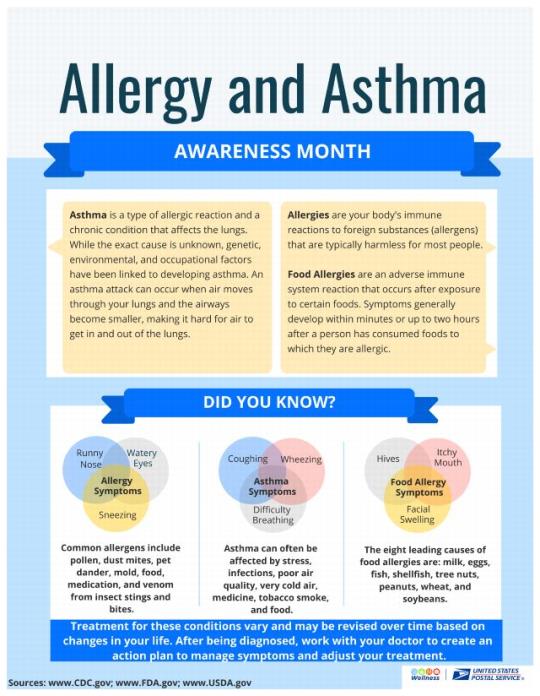Allergy and Asthma Awareness Month is recognized each May, which is the peak season for people who have these conditions. Allergies are your body’s immune reactions to foreign substances — allergens — that are typically harmless for most people.
Common allergens include:
n Pollen,
n Dust mites,
n Pet dander,
n Mold,
n Medication, and
n Venom from insect stings and bites.
Food allergies, including those linked to milk, eggs, fish, and tree nuts, are also common.
Symptoms include a runny nose, sneezing, watery eyes, breathing problems, itching, and swelling. Some allergies can even be life-threatening.
Asthma is a type of allergic reaction and a chronic condition that affects the lungs. While the exact cause of asthma is unknown, genetic, environmental, and occupational factors have been linked to developing asthma.
Allergies and asthma affect people of all ages. They often exist together, and the likelihood for occurrence runs in families.
Allergies are diagnosed by skin and blood tests, and treated with medication, allergy shots, and avoiding substances that cause reactions. Asthma is diagnosed by reviewing medical history, allergies, and pulmonary diagnostic tests.
Treatment for both conditions vary. For more information about allergies and asthma, visit:
n The Centers for Disease Control and Prevention at cdc.gov/asthma/faqs.htm.
n Food and Drug Administration at fda.gov/food/food-labeling-nutrition/food-allergies.
n USPS® May Wellness Toolkit at liteblue.usps.gov/humanresources/benefits/health-wellness/wellness-partners-toolkits.shtml.
— Benefits and Wellness,
Human Resources, 5-6-21

